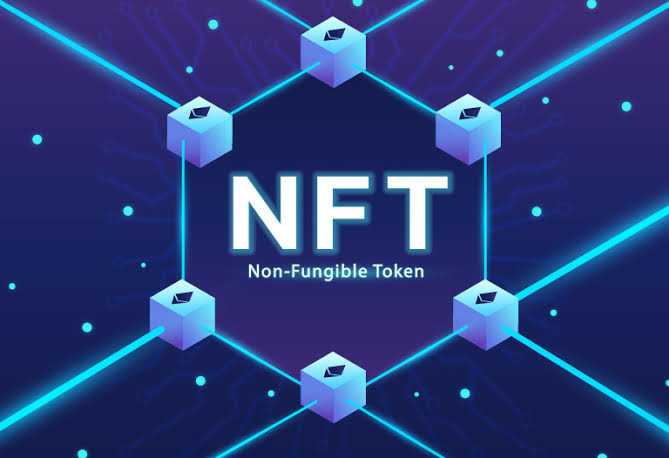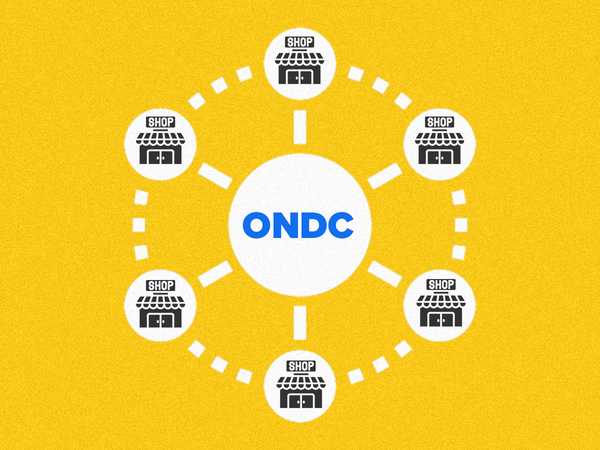The Future of Money: Exploring the Rise of Cryptocurrency and Its Market Risks
Discover the future of money with our in-depth exploration of the rise of cryptocurrency and the potential market risks that come with it. Learn more now.
1. What is cryptocurrency and how does it work?

Cryptocurrency is a digital or virtual form of currency that uses cryptography for security purposes. It works as a decentralized medium of exchange, meaning transactions occur directly between users without any central authority or intermediary such as banks. Cryptocurrencies rely on blockchain technology, a distributed public ledger, to record and validate transactions. Each transaction is grouped with other transactions into a block and added to the chain through a consensus mechanism called mining. This process ensures the legitimacy and security of the entire system while providing transparency and immutability.
2. What are the advantages and disadvantages of using cryptocurrency?

Advantages of using cryptocurrency:
1. Lower transaction fees: Cryptocurrency transactions generally have lower fees compared to traditional banking systems.
2. Faster transactions: Transactions are processed more quickly with cryptocurrencies, reducing waiting times.
3. Decentralization: Cryptocurrencies operate on decentralized networks, avoiding interference from governments and central banks.
4. Increased security: Blockchain technology provides a higher level of security, making it difficult for transactions to be tampered with or manipulated.
5. Global accessibility: Anyone with an internet connection can participate in cryptocurrency transactions without the need for banking services.
6. Privacy: Cryptocurrencies can offer greater privacy and anonymity than traditional financial systems.
Disadvantages of using cryptocurrency:
1. Price volatility: The value of cryptocurrencies fluctuates greatly, leading to potential losses for investors.
2. Limited acceptance: Many businesses are yet to accept cryptocurrency as a form of payment, limiting its usability in everyday transactions.
3. Regulatory uncertainty: Governments worldwide are still grappling with how to regulate cryptocurrencies, leading to potential changes that could impact their use and value.
4. Technological barriers: The use of cryptocurrencies can be complex for those unfamiliar with the technology, discouraging widespread adoption.
5. Security risks: Despite blockchain technology's security improvements, instances of hacking and theft can occur in the cryptocurrency space.
6. Environmental concerns: The energy-intensive mining process required for some cryptocurrencies has been criticized for its harmful environmental impact.
3. What factors have contributed to the rise of cryptocurrency?

Several factors have contributed to the rise of cryptocurrency, including:
1. Decentralization: Cryptocurrencies operate on decentralized networks, which means they aren't controlled by a single authority such as a central bank or government. This aspect provides more freedom and autonomy to users in managing their financial transactions.
2. Digitalization and technological advancements: The growth of digital technologies and internet access has made it easier for individuals and businesses to adopt cryptocurrencies as part of their everyday lives.
3. Lower transaction costs: Transferring cryptocurrencies generally incurs lower fees compared to traditional banking systems, which is an attractive feature for many users.
4. Faster transaction processing: Cryptocurrencies can process transactions more quickly compared to traditional banking systems, making them more appealing for real-time money transfers.
5. Increased privacy and security: Cryptocurrencies provide users with increased privacy and security through encryption and blockchain technology, which stores transaction data immutably.
6. Borderless transactions: Cryptocurrencies can be sent and received globally without the need for currency conversion or worrying about international fees.
7. Speculation and investment opportunities: The volatile nature of cryptocurrency prices has attracted investors looking to profit from price fluctuations, further raising awareness and interest in the space.
8. Growing acceptance by businesses: As more companies accept cryptocurrencies as a form of payment, their prevalence in the marketplace grows, leading to increased adoption among consumers.
9. Increased media coverage: The growing media attention towards cryptocurrencies has helped educate the general public about the technology and its potential applications, driving up popularity.
10. Government regulations: Some governments have been exploring the possibility of issuing their own digital currencies or implementing supportive regulations that can facilitate the growth of the cryptocurrency market.
4. How does the blockchain technology support cryptocurrency transactions?

Blockchain technology supports cryptocurrency transactions by providing a decentralized, secure, and transparent ledger system. This ledger consists of a series of interconnected blocks that store transaction data in an immutable and tamper-proof manner. Each block contains a list of transactions, along with a reference to the previous block through a cryptographic hash.
When a new transaction occurs, it gets verified by a network of computers, called nodes. These nodes validate the transactions using consensus algorithms and add them to the most recent block. Once the block becomes full, a new one is created and linked to the previous one, forming a chain.
The decentralized nature of blockchain ensures that no single entity has control over the entire system, making it resistant to manipulation and fraud. Furthermore, the use of cryptography provides secure communication channels and enables digital signatures for transaction validation.
Finally, the transparent nature of blockchain ensures that all participants can view the entire history of transactions on the network. This fosters trust among users as they can verify transactions themselves without relying on third-party intermediaries.
5. What are the different types of cryptocurrencies and how do they differ from each other?

There are several types of cryptocurrencies, each with distinct features and characteristics. Here are some popular ones and how they differ from each other:
1. Bitcoin (BTC): The first and most well-known cryptocurrency, Bitcoin is a decentralized digital currency that uses blockchain technology for secure, peer-to-peer transactions. It has a limited supply of 21 million coins.
2. Ethereum (ETH): A platform that enables developers to build decentralized applications (dApps) and smart contracts on its blockchain. Its native cryptocurrency is called Ether, and it also has a wide range of applications beyond mere transactions.
3. Litecoin (LTC): A fork of Bitcoin, Litecoin aims to offer faster transaction times and lower fees for users. It uses the Scrypt algorithm for mining, which differs from Bitcoin's SHA-256.
4. Ripple (XRP): Focused on global payments and settlements for financial institutions, Ripple offers a fast and cost-effective way to transfer funds across borders. XRP, its native currency, serves as a bridge between different fiat currencies.
5. Cardano (ADA): A research-driven blockchain platform, Cardano aims to combine the best features of existing cryptocurrencies while solving their scalability issues. Its native token is ADA, which is used for transactions within the network.
6. Polkadot (DOT): Designed to connect multiple blockchains into a single ecosystem, Polkadot enables cross-chain communication and data transfers. Its native token, DOT, is used for governance as well as transaction fees within the network.
7. Chainlink (LINK): Chainlink is a decentralized oracle network that connects off-chain data sources to on-chain smart contracts via API-based oracles called "chainlinks." Its native token LINK is used to pay node operators who provide these oracles.
These are just a few examples of the many cryptocurrencies available today. Each one differs in terms of their underlying technology, use cases, and value propositions.
6. What are the risks associated with investing in cryptocurrency?

Some risks associated with investing in cryptocurrency include market volatility, security concerns (hacking and scams), regulatory uncertainty, lack of consumer protections, technological issues (bugs and network disruptions), and the potential for competition from new emerging coins.
7. How do government regulations affect the use and trade of cryptocurrency?

Government regulations affect the use and trade of cryptocurrency in several ways. These include:
1. Legal recognition and taxation: Regulatory authorities may choose to recognize and treat cryptocurrencies as legal assets, subjecting them to tax and reporting requirements. This can legitimize the use of cryptocurrencies but also impose additional burdens on users and traders.
2. Anti-money laundering (AML) and know-your-customer (KYC) compliance: Governments may enforce AML and KYC regulations on exchanges, requiring them to verify the identity of their customers and report suspicious transactions. These measures can help prevent illicit activities but may also increase operational costs for exchanges and act as a barrier for new entrants.
3. Security guidelines: Regulatory bodies may set minimum security standards for the storage and handling of cryptocurrencies. While this can improve safety for users, it can also impose additional costs on businesses dealing with cryptocurrencies.
4. Licensing requirements: Some countries require companies dealing with cryptocurrencies to obtain licenses before they can operate legally. This creates an entry barrier for commercial enterprises, limiting market access.
5. Prohibition or restrictions: In some cases, governments completely ban or severely restrict the use or trade of cryptocurrencies, making it difficult or even illegal for citizens to engage with them.
6. Cross-border transactions: Regulation of cryptocurrency transactions that involve multiple jurisdictions can create complications, as different countries might have conflicting rules regarding their use and transfer.
7. Price volatility: Government regulations may also impact price volatility by creating uncertainty in the market, which could lead to price fluctuations. Indirectly, this affects the adoption of cryptocurrencies by making them less attractive to potential users due to unpredictable value changes.
Overall, government regulations play a critical role in shaping the cryptocurrency landscape by providing legal frameworks and guidelines for their use and trade while also trying to mitigate potential risks associated with these digital assets.
8. Can cryptocurrency become a mainstream form of payment in the future?

Cryptocurrency has the potential to become a mainstream form of payment in the future as it gains wider acceptance and adoption, developments in technology improve its usability, and regulations evolve to provide a legal framework for its use.
9. How do market trends and investor sentiment impact the value of cryptocurrency?

Market trends and investor sentiment impact the value of cryptocurrency in various ways. Market trends can be influenced by factors such as increased adoption, regulatory developments, and technological advancements. When the market trend is positive, it attracts more investors, leading to an increase in demand and boosting the value of cryptocurrencies.
Investor sentiment is another crucial factor that affects the value of cryptocurrencies. Positive investor sentiment typically stems from optimistic developments in the market, such as partnerships and successful projects, which can encourage more people to invest in the asset. On the other hand, negative investor sentiment may result from unfavorable events or poor market performance, deterring potential investors and causing a decline in the value of cryptocurrencies.
Overall, market trends and investor sentiment both contribute significantly to shaping the value of cryptocurrencies in the ever-changing digital asset landscape.
10. What are the potential future developments for cryptocurrency and its impact on the financial industry?

Some potential future developments for cryptocurrency and its impact on the financial industry include:
1. Integration with traditional banking systems: As cryptocurrencies become more widely accepted, they may become integrated into traditional banking systems, allowing for seamless transactions and increased efficiency.
2. Global remittances: Cryptocurrencies can facilitate faster and cheaper international transactions, making remittance services more accessible to individuals worldwide and transforming the global remittance industry.
3. Widespread adoption as a medium of exchange: Cryptocurrencies could potentially be adopted worldwide as a preferred medium of exchange, leading to decentralized currencies that could complement or even replace traditional ones.
4. Improved accessibility to financial services: Cryptocurrencies could aid in expanding access to financial services for unbanked populations and promoting financial inclusion globally.
5. Central Bank Digital Currencies (CBDCs): More central banks may develop their digital currencies to take advantage of the benefits offered by blockchain technology, potentially affecting monetary policies and payment infrastructures.
6. Enhanced security measures: The development of advanced security tools and measures will help protect the cryptocurrency ecosystem from fraud, theft, and hacking attempts while increasing confidence in the industry.
7. Regulations and compliance: Governments around the world may establish comprehensive regulatory frameworks for cryptocurrencies, leading to increased legitimacy, transparency, and stability within the industry.
8. Decentralized finance (DeFi) growth: DeFi platforms leveraging cryptocurrencies have the potential to transform various aspects of the financial sector, such as lending, borrowing, trading, and insurance.
9. Development of new financial products: As cryptocurrency markets continue to mature, we can expect more sophisticated financial instruments built around digital assets that cater to investors' diverse needs.
10. Environmental impact considerations: As concerns about energy consumption during cryptocurrency mining persist, there may be a shift towards more sustainable solutions like proof-of-stake algorithms or other eco-friendly initiatives.
Conclusion :
In conclusion, cryptocurrency is a digital asset that uses cryptography to secure and verify transactions on a decentralized network. It operates independently of central authorities like governments and banks, allowing for faster and more secure transactions. While the technology has the potential to revolutionize the financial industry, there are also significant risks associated with its use, including market volatility, regulatory challenges, and security vulnerabilities. As cryptocurrency continues to gain popularity and adoption, it will be important for individuals and businesses to carefully consider these risks before investing in or using these digital assets.
Discover the future of money with our in-depth exploration of the rise of cryptocurrency and the potential market risks that come with it. Learn more now.
1. What is cryptocurrency and how does it work?

Cryptocurrency is a digital or virtual form of currency that uses cryptography for security purposes. It works as a decentralized medium of exchange, meaning transactions occur directly between users without any central authority or intermediary such as banks. Cryptocurrencies rely on blockchain technology, a distributed public ledger, to record and validate transactions. Each transaction is grouped with other transactions into a block and added to the chain through a consensus mechanism called mining. This process ensures the legitimacy and security of the entire system while providing transparency and immutability.
2. What are the advantages and disadvantages of using cryptocurrency?

Advantages of using cryptocurrency: 1. Lower transaction fees: Cryptocurrency transactions generally have lower fees compared to traditional banking systems. 2. Faster transactions: Transactions are processed more quickly with cryptocurrencies, reducing waiting times. 3. Decentralization: Cryptocurrencies operate on decentralized networks, avoiding interference from governments and central banks. 4. Increased security: Blockchain technology provides a higher level of security, making it difficult for transactions to be tampered with or manipulated. 5. Global accessibility: Anyone with an internet connection can participate in cryptocurrency transactions without the need for banking services. 6. Privacy: Cryptocurrencies can offer greater privacy and anonymity than traditional financial systems. Disadvantages of using cryptocurrency: 1. Price volatility: The value of cryptocurrencies fluctuates greatly, leading to potential losses for investors. 2. Limited acceptance: Many businesses are yet to accept cryptocurrency as a form of payment, limiting its usability in everyday transactions. 3. Regulatory uncertainty: Governments worldwide are still grappling with how to regulate cryptocurrencies, leading to potential changes that could impact their use and value. 4. Technological barriers: The use of cryptocurrencies can be complex for those unfamiliar with the technology, discouraging widespread adoption. 5. Security risks: Despite blockchain technology's security improvements, instances of hacking and theft can occur in the cryptocurrency space. 6. Environmental concerns: The energy-intensive mining process required for some cryptocurrencies has been criticized for its harmful environmental impact.
3. What factors have contributed to the rise of cryptocurrency?

Several factors have contributed to the rise of cryptocurrency, including: 1. Decentralization: Cryptocurrencies operate on decentralized networks, which means they aren't controlled by a single authority such as a central bank or government. This aspect provides more freedom and autonomy to users in managing their financial transactions. 2. Digitalization and technological advancements: The growth of digital technologies and internet access has made it easier for individuals and businesses to adopt cryptocurrencies as part of their everyday lives. 3. Lower transaction costs: Transferring cryptocurrencies generally incurs lower fees compared to traditional banking systems, which is an attractive feature for many users. 4. Faster transaction processing: Cryptocurrencies can process transactions more quickly compared to traditional banking systems, making them more appealing for real-time money transfers. 5. Increased privacy and security: Cryptocurrencies provide users with increased privacy and security through encryption and blockchain technology, which stores transaction data immutably. 6. Borderless transactions: Cryptocurrencies can be sent and received globally without the need for currency conversion or worrying about international fees. 7. Speculation and investment opportunities: The volatile nature of cryptocurrency prices has attracted investors looking to profit from price fluctuations, further raising awareness and interest in the space. 8. Growing acceptance by businesses: As more companies accept cryptocurrencies as a form of payment, their prevalence in the marketplace grows, leading to increased adoption among consumers. 9. Increased media coverage: The growing media attention towards cryptocurrencies has helped educate the general public about the technology and its potential applications, driving up popularity. 10. Government regulations: Some governments have been exploring the possibility of issuing their own digital currencies or implementing supportive regulations that can facilitate the growth of the cryptocurrency market.
4. How does the blockchain technology support cryptocurrency transactions?

Blockchain technology supports cryptocurrency transactions by providing a decentralized, secure, and transparent ledger system. This ledger consists of a series of interconnected blocks that store transaction data in an immutable and tamper-proof manner. Each block contains a list of transactions, along with a reference to the previous block through a cryptographic hash. When a new transaction occurs, it gets verified by a network of computers, called nodes. These nodes validate the transactions using consensus algorithms and add them to the most recent block. Once the block becomes full, a new one is created and linked to the previous one, forming a chain. The decentralized nature of blockchain ensures that no single entity has control over the entire system, making it resistant to manipulation and fraud. Furthermore, the use of cryptography provides secure communication channels and enables digital signatures for transaction validation. Finally, the transparent nature of blockchain ensures that all participants can view the entire history of transactions on the network. This fosters trust among users as they can verify transactions themselves without relying on third-party intermediaries.
5. What are the different types of cryptocurrencies and how do they differ from each other?

There are several types of cryptocurrencies, each with distinct features and characteristics. Here are some popular ones and how they differ from each other: 1. Bitcoin (BTC): The first and most well-known cryptocurrency, Bitcoin is a decentralized digital currency that uses blockchain technology for secure, peer-to-peer transactions. It has a limited supply of 21 million coins. 2. Ethereum (ETH): A platform that enables developers to build decentralized applications (dApps) and smart contracts on its blockchain. Its native cryptocurrency is called Ether, and it also has a wide range of applications beyond mere transactions. 3. Litecoin (LTC): A fork of Bitcoin, Litecoin aims to offer faster transaction times and lower fees for users. It uses the Scrypt algorithm for mining, which differs from Bitcoin's SHA-256. 4. Ripple (XRP): Focused on global payments and settlements for financial institutions, Ripple offers a fast and cost-effective way to transfer funds across borders. XRP, its native currency, serves as a bridge between different fiat currencies. 5. Cardano (ADA): A research-driven blockchain platform, Cardano aims to combine the best features of existing cryptocurrencies while solving their scalability issues. Its native token is ADA, which is used for transactions within the network. 6. Polkadot (DOT): Designed to connect multiple blockchains into a single ecosystem, Polkadot enables cross-chain communication and data transfers. Its native token, DOT, is used for governance as well as transaction fees within the network. 7. Chainlink (LINK): Chainlink is a decentralized oracle network that connects off-chain data sources to on-chain smart contracts via API-based oracles called "chainlinks." Its native token LINK is used to pay node operators who provide these oracles. These are just a few examples of the many cryptocurrencies available today. Each one differs in terms of their underlying technology, use cases, and value propositions.
6. What are the risks associated with investing in cryptocurrency?

Some risks associated with investing in cryptocurrency include market volatility, security concerns (hacking and scams), regulatory uncertainty, lack of consumer protections, technological issues (bugs and network disruptions), and the potential for competition from new emerging coins.
7. How do government regulations affect the use and trade of cryptocurrency?

Government regulations affect the use and trade of cryptocurrency in several ways. These include: 1. Legal recognition and taxation: Regulatory authorities may choose to recognize and treat cryptocurrencies as legal assets, subjecting them to tax and reporting requirements. This can legitimize the use of cryptocurrencies but also impose additional burdens on users and traders. 2. Anti-money laundering (AML) and know-your-customer (KYC) compliance: Governments may enforce AML and KYC regulations on exchanges, requiring them to verify the identity of their customers and report suspicious transactions. These measures can help prevent illicit activities but may also increase operational costs for exchanges and act as a barrier for new entrants. 3. Security guidelines: Regulatory bodies may set minimum security standards for the storage and handling of cryptocurrencies. While this can improve safety for users, it can also impose additional costs on businesses dealing with cryptocurrencies. 4. Licensing requirements: Some countries require companies dealing with cryptocurrencies to obtain licenses before they can operate legally. This creates an entry barrier for commercial enterprises, limiting market access. 5. Prohibition or restrictions: In some cases, governments completely ban or severely restrict the use or trade of cryptocurrencies, making it difficult or even illegal for citizens to engage with them. 6. Cross-border transactions: Regulation of cryptocurrency transactions that involve multiple jurisdictions can create complications, as different countries might have conflicting rules regarding their use and transfer. 7. Price volatility: Government regulations may also impact price volatility by creating uncertainty in the market, which could lead to price fluctuations. Indirectly, this affects the adoption of cryptocurrencies by making them less attractive to potential users due to unpredictable value changes. Overall, government regulations play a critical role in shaping the cryptocurrency landscape by providing legal frameworks and guidelines for their use and trade while also trying to mitigate potential risks associated with these digital assets.
8. Can cryptocurrency become a mainstream form of payment in the future?

Cryptocurrency has the potential to become a mainstream form of payment in the future as it gains wider acceptance and adoption, developments in technology improve its usability, and regulations evolve to provide a legal framework for its use.
9. How do market trends and investor sentiment impact the value of cryptocurrency?

Market trends and investor sentiment impact the value of cryptocurrency in various ways. Market trends can be influenced by factors such as increased adoption, regulatory developments, and technological advancements. When the market trend is positive, it attracts more investors, leading to an increase in demand and boosting the value of cryptocurrencies. Investor sentiment is another crucial factor that affects the value of cryptocurrencies. Positive investor sentiment typically stems from optimistic developments in the market, such as partnerships and successful projects, which can encourage more people to invest in the asset. On the other hand, negative investor sentiment may result from unfavorable events or poor market performance, deterring potential investors and causing a decline in the value of cryptocurrencies. Overall, market trends and investor sentiment both contribute significantly to shaping the value of cryptocurrencies in the ever-changing digital asset landscape.
10. What are the potential future developments for cryptocurrency and its impact on the financial industry?

Some potential future developments for cryptocurrency and its impact on the financial industry include: 1. Integration with traditional banking systems: As cryptocurrencies become more widely accepted, they may become integrated into traditional banking systems, allowing for seamless transactions and increased efficiency. 2. Global remittances: Cryptocurrencies can facilitate faster and cheaper international transactions, making remittance services more accessible to individuals worldwide and transforming the global remittance industry. 3. Widespread adoption as a medium of exchange: Cryptocurrencies could potentially be adopted worldwide as a preferred medium of exchange, leading to decentralized currencies that could complement or even replace traditional ones. 4. Improved accessibility to financial services: Cryptocurrencies could aid in expanding access to financial services for unbanked populations and promoting financial inclusion globally. 5. Central Bank Digital Currencies (CBDCs): More central banks may develop their digital currencies to take advantage of the benefits offered by blockchain technology, potentially affecting monetary policies and payment infrastructures. 6. Enhanced security measures: The development of advanced security tools and measures will help protect the cryptocurrency ecosystem from fraud, theft, and hacking attempts while increasing confidence in the industry. 7. Regulations and compliance: Governments around the world may establish comprehensive regulatory frameworks for cryptocurrencies, leading to increased legitimacy, transparency, and stability within the industry. 8. Decentralized finance (DeFi) growth: DeFi platforms leveraging cryptocurrencies have the potential to transform various aspects of the financial sector, such as lending, borrowing, trading, and insurance. 9. Development of new financial products: As cryptocurrency markets continue to mature, we can expect more sophisticated financial instruments built around digital assets that cater to investors' diverse needs. 10. Environmental impact considerations: As concerns about energy consumption during cryptocurrency mining persist, there may be a shift towards more sustainable solutions like proof-of-stake algorithms or other eco-friendly initiatives. Conclusion : In conclusion, cryptocurrency is a digital asset that uses cryptography to secure and verify transactions on a decentralized network. It operates independently of central authorities like governments and banks, allowing for faster and more secure transactions. While the technology has the potential to revolutionize the financial industry, there are also significant risks associated with its use, including market volatility, regulatory challenges, and security vulnerabilities. As cryptocurrency continues to gain popularity and adoption, it will be important for individuals and businesses to carefully consider these risks before investing in or using these digital assets.



















Login to your account or create a new account to post comments!